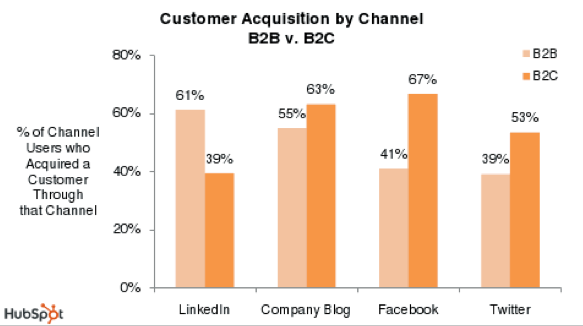6 Non-Fluff Answers to Your Social Media Questions
Posted: March 03, 2011
Social media fluff. That is something we hear over and over again. In an effort to remove some of that fluff and bring you meaty social media tips, Hubspot collaborated with oneforty and Backupify to provide a hearty list of social media tips.
 Social media fluff. That is something we hear over and over again. In an effort to remove some of that fluff and bring you meaty social media tips, we collaborated in a webinar with oneforty and Backupify.
Social media fluff. That is something we hear over and over again. In an effort to remove some of that fluff and bring you meaty social media tips, we collaborated in a webinar with oneforty and Backupify.
If you were unable to attend the webinar, here are some of the top questions asked during the session and our non-fluff answers to them:
1. Should you avoid self-promotion in social media engagement?
“Most of it should be trying to be helpful,” said Janet Aronica of oneforty. Social media should be about teaching people and providing educational resources, she added. Kristin Dziadul of Backupify shared that sentiment, encouraging marketers to share things their community cares about. After you earn their trust, you can slowly start promoting yourself because people will be interested in you.
2. What are some of the most innovative content offers you have seen?
Newton Running is a company Janet was fascinated by. It produces a range of content pieces to engage its community of runners. For instance, Newton Running has a blog, a podcast series and is very active on social media channels, including Twitter and Facebook. It also has a fantastic YouTube channel that shows the science of running.
Kristin is also fond of the way companies leverage video for marketing. She pointed out the Daily Grommet as an example. The site showcases product demos and gives voice to its community members to share the benefits of different items available for sale.
Another unique usage of video is something we recently covered on this blog. David Meerman Scott, HubSpot’s Marketer in Residence, released a crowdsourced video of his keynote speech at the MarketingSherpa's Email Summit in Las Vegas. His talk was recorded by members of the audience who later contributed their footage for the creation of a crowdsourced marketing video.
[caption id="attachment_8392" align="alignright"] Figure Credit: Hubspot[/caption]3. Does the advice for social media engagement differ in B2B and B2C environments?
Figure Credit: Hubspot[/caption]3. Does the advice for social media engagement differ in B2B and B2C environments?
The short answer to this question is no. What’s successful and not so successful in social media can be generally applied to both B2B and B2C companies.
That being said, in B2B cases it might be a little bit more difficult to see vibrant interaction on sites and Twitter accounts, for instance. But then the question really comes down to finding the right channels for your business needs. In our newest State of Inbound Marketing report, we uncovered that B2C companies are more successful on Facebook, while B2B companies are better at engaging their LinekedIn contacts.
4. How do I set up my social media goals?
Your social media goals, Janet noted, should really be your business goals. What metrics are you trying to move? Ultimately, you are trying to make money, so move past fans and followers. “We are getting there and we have more access to tools that allow us to do that,” Janet said. For instance, within HubSpot there is a way you can track lead conversions from social media and how they can eventually turn into customers.
5. Should you follow back everyone who follows you?
There has been a lot of debate in terms of the ideal following-follower ratio. If you follow everyone, it looks like the value of your Twitter following is diminishing. If you follow just a few people, you look like a snob. So what to do?
Janet noted that this is a question we are still trying to figure out. What she has learned from @Pistachio at oneforty is that it's polite to have a direct conversation with someone. Twitter allows you to do that only if you are mutually following each other. That is way Janet recommends marketers should be generous with the follow back.
6. How do you attract inbound links to your site?
We gave a three-fold answer to this question.
Kristin touched upon the importance of brand monitoring tools. When you monitor key industry terms (even by using Google Alerts), you know what newsworthy events are taking place. It is a good practice to tackle these topics and bring your unique perspective to the table.
Janet pointed out the importance of good content for accumulating inbound links. When you have something meaningful to share, people will link to your site and share it with their networks.
Lastly, I wanted to mention the correlation between inbound links and engaging with thought leaders. When you build relationships and nurture them over time, the chances are people are going to remember you and acknowledge your content.
 Biz Tip Source: Hubspot
Biz Tip Source: Hubspot
Author: Magdalena Georgieva